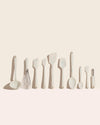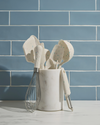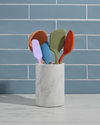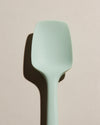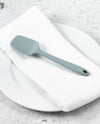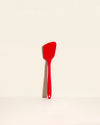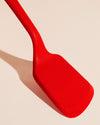Products
What Is a Bottle Stopper and How To Use One
Published
August 14, 2024
Reviewed by
Suze Dowling

Most people have heard of bottle stoppers, but how many have ever stopped to consider why we have them?
Bottle stoppers may seem trivial, but they’re actually quite necessary. They seal the openings of bottles, preventing air from entering and spoiling the contents. They are most commonly associated with wine bottles, but can be used with a variety of other bottle types, such as those for champagne, beer, or even oil and vinegar.
The history of bottle stoppers dates back centuries, with the first known types being made from oil-soaked rags. Thankfully, we've come a long way since then. The modern bottle stopper has evolved to be more functional and aesthetically pleasing.
There are several types of bottle stoppers available in the market today. The traditional cork stopper, made from the bark of the cork oak tree, is often associated with wine bottles. However, due to issues like cork taint, alternatives have been developed. These include synthetic corks made from plastic compounds, screw caps, and glass stoppers.
More decorative options, often used as gifts or for special occasions, are made from materials like stainless steel, crystal, or even wood, and they often come with ornate designs or personalized touches.
Each type of stopper has its benefits and drawbacks, and the choice often depends on the type of bottle, the beverage it contains, and personal preference.
Why Use a Bottle Stopper?
The primary reason to use a bottle stopper is to preserve the quality of the beverage within the bottle. Oxygen is both a friend and foe of beverages like wine. While a little oxygen can help enhance the flavors of the wine, too much of it can lead to oxidation, significantly damaging the taste and aroma.
By using a bottle stopper, you limit the beverage's exposure to oxygen, slowing down the oxidation process and preserving the drink's flavors for a longer period. This is particularly crucial for wine, where subtle flavors and aromas can be destroyed by overexposure to oxygen.
Additionally, bottle stoppers provide a cost-effective solution for preserving beverages. Instead of feeling compelled to finish an entire bottle in one sitting to avoid spoilage, a bottle stopper lets you extend the life of your beverages, saving money in the long run.
What Are Some Common Mistakes When Recapping Wine?
When it comes to recapping wine, a few common mistakes can significantly impact the quality and longevity of your beverage.
Here are some of the most prevalent ones:
Not Using a Stopper
Some people might simply replace the original cork or screw cap after opening a wine bottle. However, these might not provide an airtight seal, leading to faster oxidation and spoilage of the wine. Using a dedicated bottle stopper, like those from GIR, ensures an airtight seal that preserves the wine's quality.
Improper Insertion of the Stopper
Forcing a stopper into a bottle that doesn't fit can damage both the stopper and the bottle. The stopper should be inserted gently but firmly to create a snug, airtight seal.
Ignoring the Need for a Clean Rim
Before inserting the stopper, it's crucial to ensure the bottle's rim is clean. Leftover residues can affect the seal's effectiveness and even contaminate the wine.
Incorrect Storage
After sealing the bottle, some might store the wine upright or in inappropriate conditions. However, wine should be stored on its side in a cool, dark place to maintain its quality. With a proper stopper, you can store bottles flat without worry.
Overestimating the Preservation Time
While a bottle stopper can extend the life of your wine, it doesn't preserve it indefinitely. It's still recommended to consume the wine within a reasonable time frame to enjoy its best flavors and aromas.
How To Use a Bottle Stopper
Using a bottle stopper effectively is more than just plugging it into the bottle's opening. Here's a simple step-by-step guide:
- Ensure the bottle is clean: Before inserting the stopper, ensure the bottle's rim is clean. Leftover residues can affect the seal's effectiveness.
- Insert the stopper: Place the stopper on the bottle's opening and press down firmly but gently until it is snugly fit. The aim is to create an airtight seal.
- Store the bottle properly: After sealing the bottle, store it in the right conditions. For instance, wine should be stored on its side in a cool, dark place.
- Check the seal: Periodically check the seal to ensure it's still tight. Some stoppers may become loose over time.
- Remove the stopper carefully: When you're ready to use the beverage again, carefully remove the stopper to avoid spilling.
Avoid common mistakes, such as forcing a stopper into a bottle that doesn't fit, which can damage both the stopper and the bottle. Also, remember that while a bottle stopper can extend the life of your beverage, it doesn't preserve it indefinitely. It's still recommended to consume the drink within a reasonable time frame.
How To Choose the Right Bottle Stopper
Choosing the right bottle stopper is not as straightforward as it may seem. Several factors should be considered to ensure you make the right choice:
- Material: The material of the stopper will affect both its effectiveness and aesthetics. Traditional cork stoppers are great for a classic look and feel, but they may degrade over time. Synthetic corks and metal stoppers tend to be more durable, while glass and crystal stoppers can add a touch of elegance to your bottle.
- Type of bottle: Different bottles may require different types of stoppers. For instance, wine bottles typically work well with cork or synthetic stoppers, while champagne might require a specialized stopper due to the carbonation.
- Frequency of use: If you frequently open and close a bottle, you might want to opt for a durable stopper that can withstand regular use. Metal or synthetic stoppers are usually a good choice in this case.
- Purpose: If the stopper is intended as a gift or for a special occasion, a more decorative or personalized stopper may be appropriate.
How To Care for Bottle Stoppers
Proper maintenance of your bottle stoppers is vital to their longevity and effectiveness. One important aspect is cleanliness.
After each use, it's recommended that you clean your stoppers, typically with warm water and a mild soap. However, it's essential to reference the manufacturer's instructions since some materials might necessitate specific cleaning methods.
The way you store your stoppers is equally significant. They should be kept in a clean, dry place, and it's crucial to steer clear of extreme temperatures as these can harm certain materials.
Moreover, it’s a good practice to routinely inspect your stoppers for signs of wear and tear. Notable signs that a stopper needs replacement include cracking, discoloring, or, in the case of cork, starting to crumble.
By integrating these practices into your routine, you can guarantee that your bottle stoppers stay in excellent condition and continue to effectively preserve your favorite beverages.
Bottle Stoppers for Beverage Preservation
At GIR, our commitment to reimagining and improving upon traditional kitchen tools has led to the development of our innovative bottle stoppers.
Made of platinum-grade silicone, our stoppers are dishwasher-safe, antimicrobial, and non-toxic, combining functionality with safety. Their unique design featuring a low-profile hidden cork ensures an airtight seal, allowing for worry-free storage of bottles, even in a flat position.
We invite you to explore our line of kitchenware and hope our bottle stoppers help you continue enjoying your favorite beverages. Happy sipping!
Sources:
How to Store Wine so It Lasts as Long as Possible | Real Simple
7 Wine-Storage Basics You Need to Know | Wine Spectator
The Pros & Cons of Different Wine Closures | Wine Enthusiast
What Is Cork Taint and How to Recognize It? (2023) | Wine Pros
